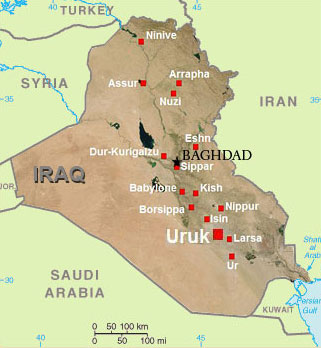How the ‘Father of Skulls’ got his liver
- Clay model of a sheep’s liver
“There was an odd object of baked clay, the likes of which I had never seen.”
These were the first words of Sir Ernest Alfred Thomas Wallis Budge (1857-1934) when he laid his eyes on the clay liver model in 1889. He found it stored in a house together with other inscribed tablets. Sir Budge (Fig. 1) was at this point in time curator at the British Museum: Keeper of Egyptian and Assyrian Antiquities. During his career, Budge made several trips to Egypt, Sudan and Mesopotamia to buy antiquities on behalf of the museum. They would be sent back to London and put on display. Budge was well known in Egypt and Sudan, and received nicknames like “Father of Skulls” and “Father of Antiquities”. In 1889 he went on his third mission to Baghdad (Fig. 2). He visited several private houses which contained many boxes filled with ancient tablets inscribed with cuneiform, the world’s oldest known writing
“In one house I found a large collection containing many valuable tablets, which was offered to me on behalf of a highly placed Baghdad official. Most of the larger tablets were found in a chamber near the wall at Abû Habbah, in which Rassam discovered the famous ‘Sun-God Tablet,’ and the inscriptions upon them were of a miscellaneous character. Besides these there was an odd object of baked clay, the like of which I had never seen. (…) I bought the whole collection and made arrangements to take it with me to London.”
Unfortunately we don’t know where the tablet was originally excavated from. Scholars believe the clay model most likely came from Sippar, modern day Tell Abû Habbah, some 60 km southwest of Baghdad, because in his book, Sir Budge mentions that antiquity dealers bought and sold most items at the site of Tell Abû Habbah.
Budge worked for the British Museum until his retirement in 1924, and enjoyed his free time to the fullest until he passed away in 1934. He published numerous articles and conducted many trips to the Near East. For his hard work he was knighted in 1920 and elevated in rank from mister to Sir Ernest Alfred Thomas Wallis Budge
](https://micrio.thingsthattalk.net/TWlzD/views/max/610x749.jpg)
Fig. 1 - Sir Ernest Alfred Thomas Wallis Budge (1857-1934) - wikicommons
](https://micrio.thingsthattalk.net/XVBmY/views/max/321x348.jpg)
Fig. 2 – Ancient cities located in modern day Iraq - Human Journey